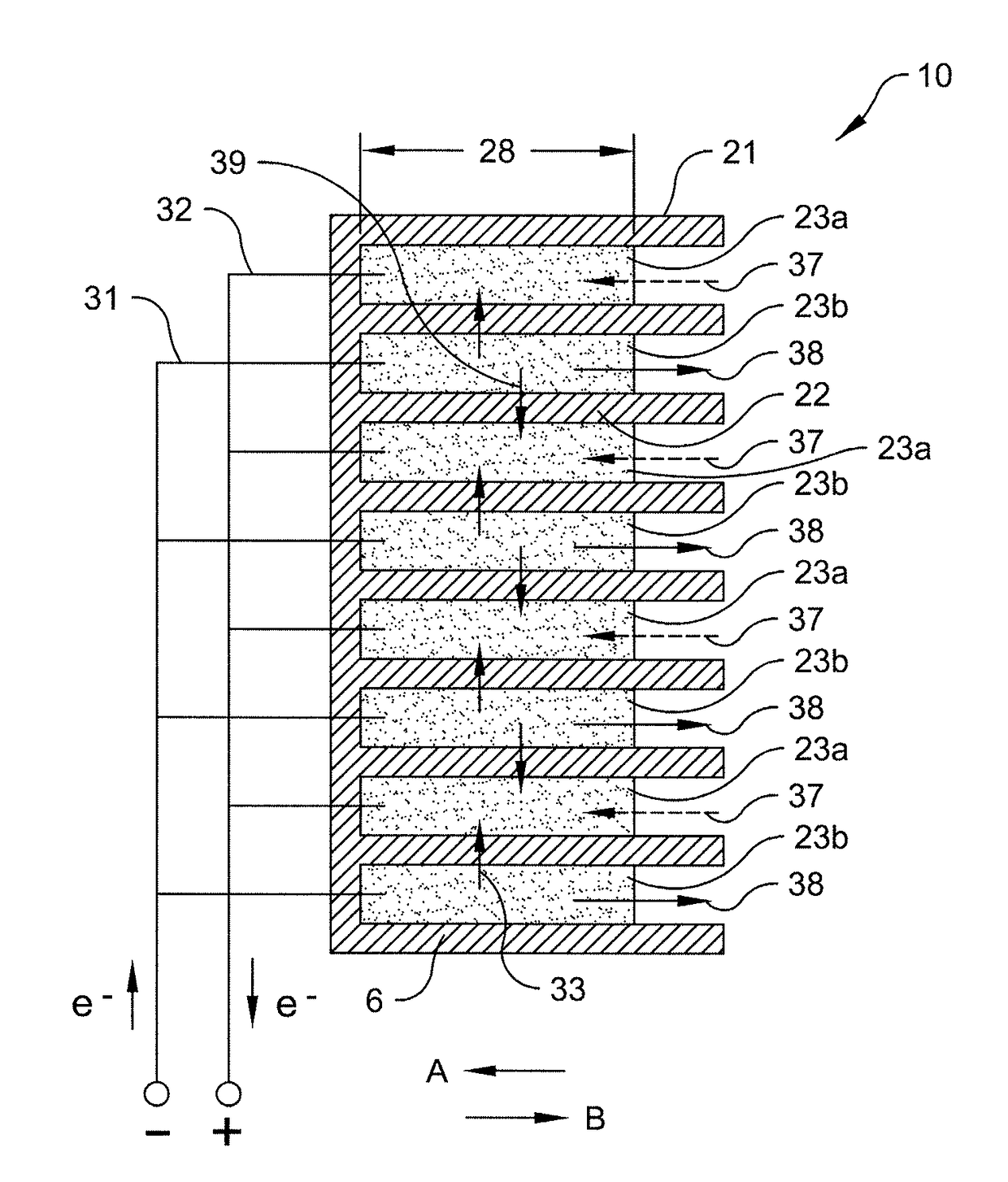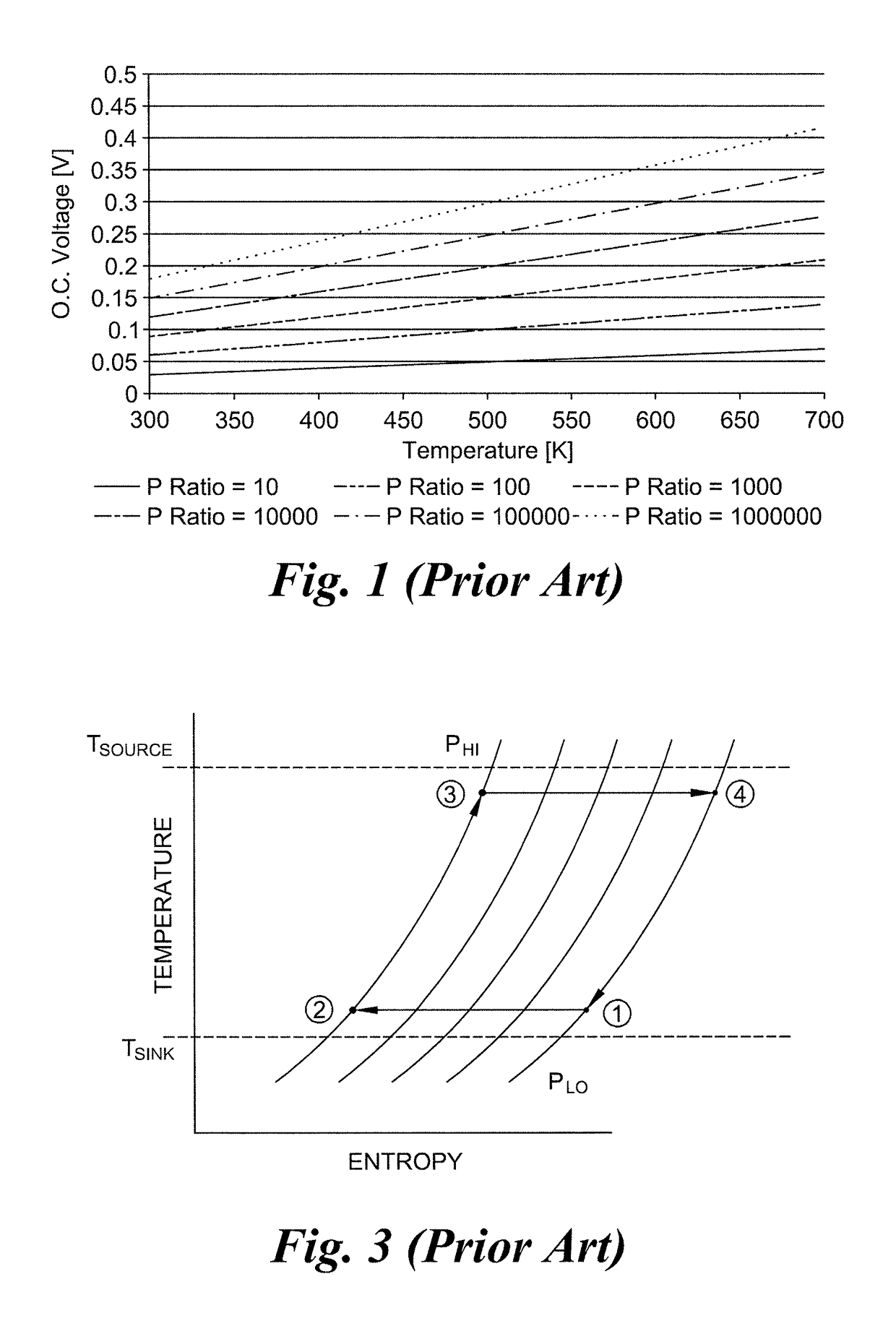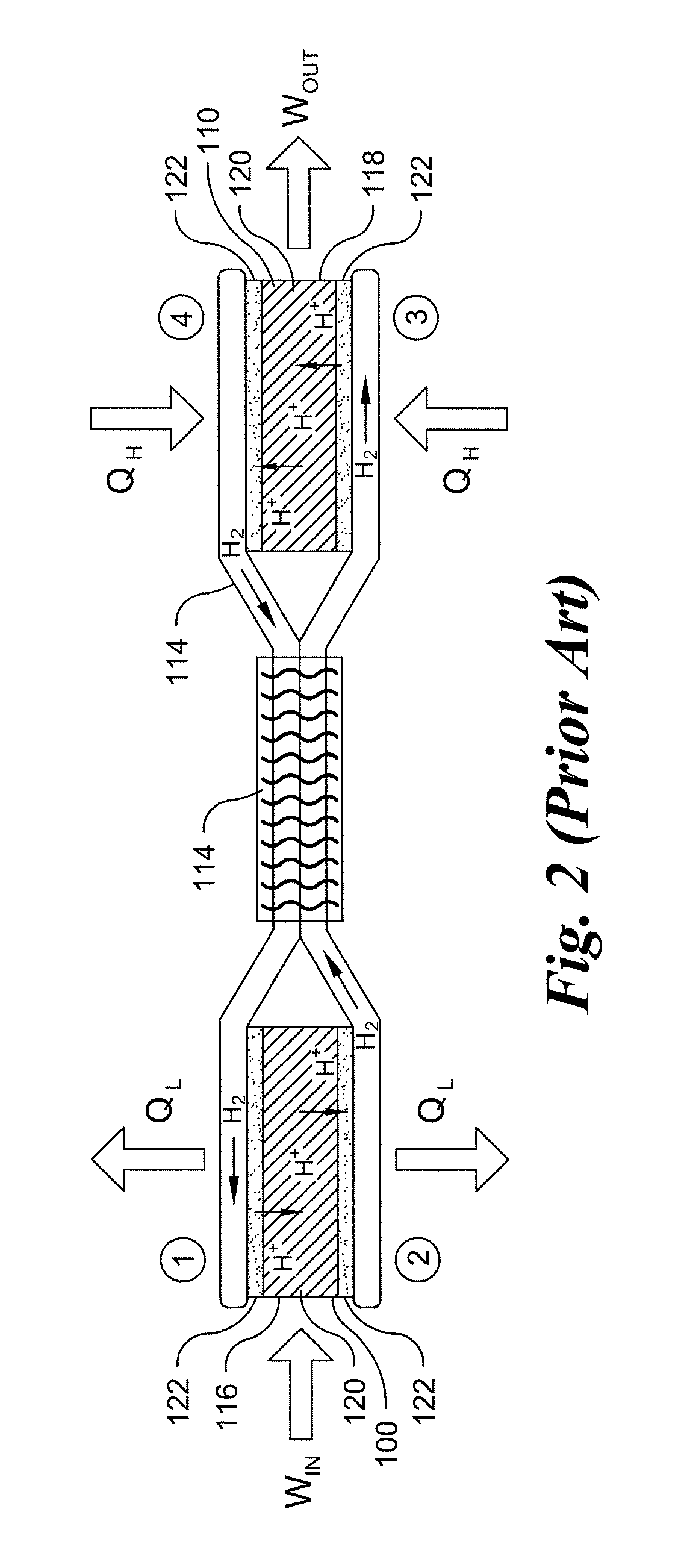Thermo-electrochemical converter
a technology of electrochemical cells and converters, applied in the direction of fuel cell combinations, regenerative fuel cells, fuel cells, etc., can solve the problems of high cost, low heat transfer efficiency, and inability to use cells, etc., to achieve high interface area and thermal conductivity, and facilitate effective heat transfer
- Summary
- Abstract
- Description
- Claims
- Application Information
AI Technical Summary
Benefits of technology
Problems solved by technology
Method used
Image
Examples
Embodiment Construction
[0051]Certain terminology is used in the following description for convenience only and is not limiting. The words “proximal,”“distal,”“upward,”“downward,”“bottom” and “top” designate directions in the drawings to which reference is made. The words “inwardly” and “outwardly” refer to directions toward and away from, respectively, a geometric center of the device, and designated parts thereof, in accordance with the present invention. Unless specifically set forth herein, the terms “a,”“an” and “the” are not limited to one element, but instead should be read as meaning “at least one.” The terminology includes the words noted above, derivatives thereof and words of similar import.
[0052]It will also be understood that terms such as “first,”“second,” and the like are provided only for purposes of clarity. The elements or components identified by these terms, and the operations thereof, may easily be switched.
[0053]Referring to the drawings in detail, wherein like numerals indicate like ...
PUM
| Property | Measurement | Unit |
|---|---|---|
| thick | aaaaa | aaaaa |
| Nernst voltage | aaaaa | aaaaa |
| Nernst voltage | aaaaa | aaaaa |
Abstract
Description
Claims
Application Information
 Login to View More
Login to View More - R&D
- Intellectual Property
- Life Sciences
- Materials
- Tech Scout
- Unparalleled Data Quality
- Higher Quality Content
- 60% Fewer Hallucinations
Browse by: Latest US Patents, China's latest patents, Technical Efficacy Thesaurus, Application Domain, Technology Topic, Popular Technical Reports.
© 2025 PatSnap. All rights reserved.Legal|Privacy policy|Modern Slavery Act Transparency Statement|Sitemap|About US| Contact US: help@patsnap.com



